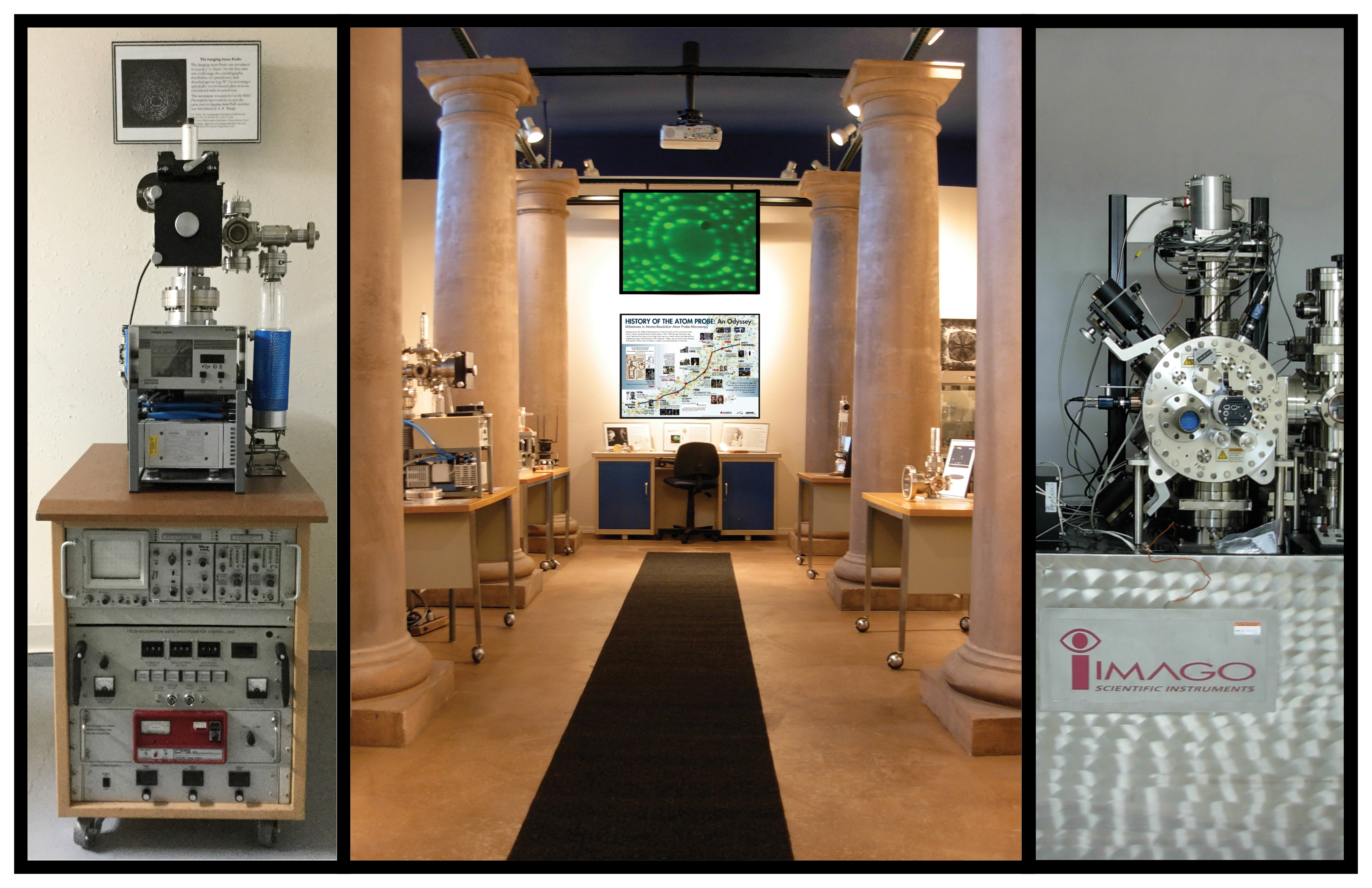
HISTORY
Erwin Müller: the Father of the Atom-Probe


The Society originally grew out of the discoveries and inventions of the late Erwin Müller, in field emission and related topics, first in Berlin and then at Pennsylvania State University, and out of the early successes by W.P. Dyke and the Linfield group in commercialising the field electron emitter as an electron source. The main focus of the Symposium and Society has moved over the years from field electron emission to field-ion microscopy to atom-probe field-ion microscopy, and their various applications, and in recent years has included many papers on field electron emission from new forms of emitter. Other main continuing interests of the Society have been the liquid-metal ion source and many aspects of the theory of high-field effects at surfaces.
The Symposium and Society have always been, in a certain sense, "techniques oriented". But this has been a broad interest, in the fundamental science associated with field electron and field ion emission and high-field surface effects, in the development of techniques and instruments based on these effects, in understanding how they work, and in the exploration of the applications of these techniques and instruments. Field-ion microscopy (FIM) was, of course, the first technique to "see atoms", in the experiments performed by Bahadur and Müller in 1955. The field electron and field ion techniques and their associated science represent the "old nanoscience". In contrast, the "new nanoscience" of modern days grew first out the development of Scanning Tunnelling Microscopy, and latterly out of other modern tools such as the various forms of High Resolution Electron Microscopy and the Focused Ion Beam machine. In fact, the electron and ion sources in many of these tools of modern nanotechnology have their origin - at least in part - in the older work associated with the field emission techniques. And the fundamental ideas about the possibility of Nanotechnology, as formulated by authors such as Feynmann (in "There's plenty of room at the bottom") and Drexler (in "Engines of Creation") were developed some years after Müller had shown experimentally that the imaging of individual atoms was possible. Some of us feel that, although others may legitimately lay claim to nanotechnology, Erwin Müller has a worthy claim to be regarded as the "Father of Nanoscience".
And, fifty years on, this international field emission community continues to exist. Modern atomic imaging techniques are often more flexible than the field-ion techniques, but the atom-probe-FIM techniques have developed into the most powerful way of analysing the nanocomposition of any conducting specimen that can be formed into the shape of a field emitter. The Symposium and Society remain an active community with much practical and theoretical knowledge and expertise (public and tacit) regarding field electron and ion emission and related science and technologies, especially atom-probe applications and new forms and applications of field electron emitters.
Museum

The Atom Probe Field Ion Museum and its Gallery were created by High-Field Consultants to preserve the history and the legacy of the Atom-Probe Field Ion Microscope and its progeny the 10cm Atom Probe. Exhibits include several of Erwin Müller's original Field Emission Microscopes, a glass Field Ion Microscope, the only remaining part of the original Atom-Probe Field Ion Microscope and the original photographic instruments used to record and process images including the first optical color comparator. The 10 cm Atom-Probe, the Imaging Atom Probe and the first spherically curved micochannel plate assembly with a fiberoptic faceplate are included. Supporting equipment on exhibit include the Elektros Electrostatic Transmission Electron Microscope, a Digital Equipment Corporation (DEC) 11/44 Computer with the first transient waveform digitizer (the Tektronix R7912) and the first Local Electrode Atom Probe (LEAP) sold to Oak Ridge National Laboratory in 2002. See the museum's website apfim.com for complete details. Admission is free, currently by appointment only.